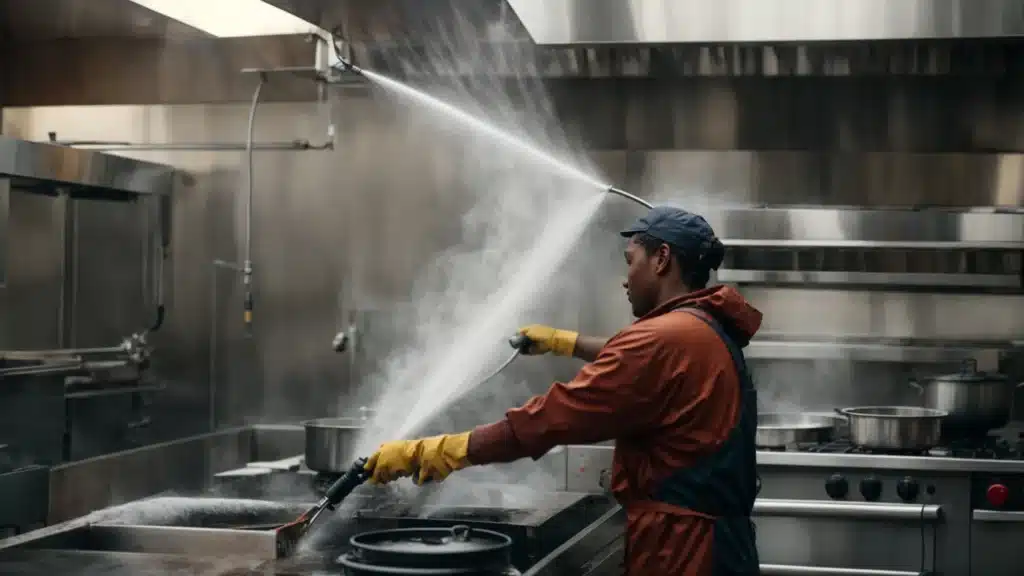Keeping Fire Risks at Bay: The Role of Hood & Exhaust Cleaning
In the bustling heart of Ontario’s commercial kitchens, where flames dance and gastronomic creations come to life, lurks an unseen adversary: the risk of fire, fueled by neglected hood and exhaust systems.
Regular cleaning of these vital components is not just a chore but a crucial line of defence against this fiery foe, safeguarding both patrons and dreams woven around culinary businesses.
Ontario Hood Cleaning emerges as your stalwart ally, wielding expertise and equipment to banish grease, dirt, and danger, thus fortifying your kitchen’s safety and efficiency.
In this article, we unfurl the veil on the pivotal role of the professional hood and exhaust cleaning and guide you through maintaining the luster of your kitchen’s guardians between services.
Why Regular Hood and Kitchen Exhaust Cleaning is Crucial for Fire Safety
Key Takeaways
- Regular Hood and Exhaust Cleaning Is Vital for Preventing Fire Hazards in Commercial Kitchens
- Professional Cleaning Services Offer Not Just cleaning, but Compliance With Fire Safety and Health Standards
- Grease Buildup Is a Primary Contributor to Fire Risks, Demanding Diligent Maintenance and Inspection
- Adhering to Legal Requirements and Codes Is Essential for Kitchen Safety and Operational Continuity
- Employing Daily and Monthly Self-Maintenance Practices Complements Professional Cleaning and Enhances Kitchen Safety
Understanding the Importance of Regular Hood Cleaning
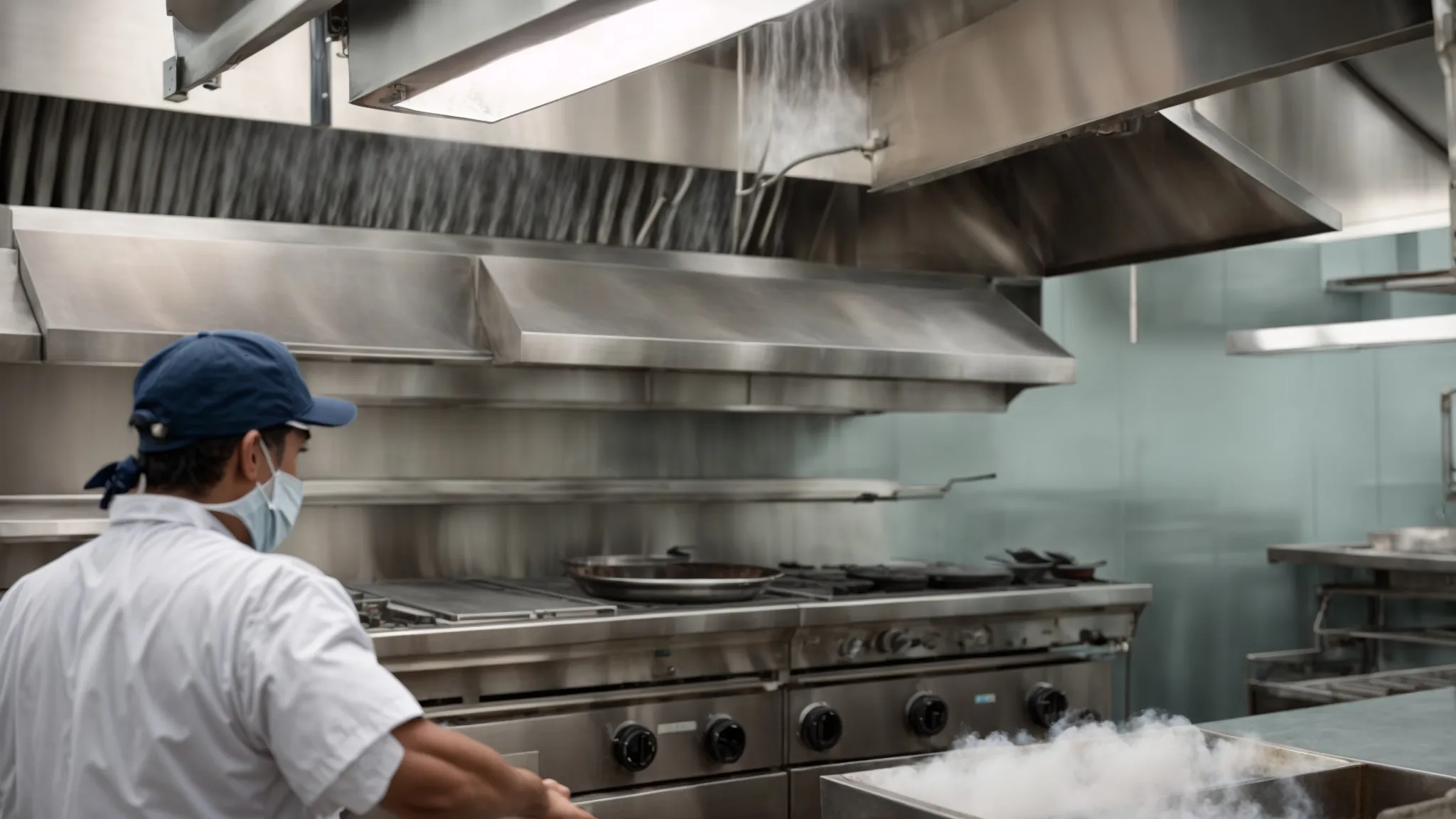
In the crucible of a commercial kitchen, the hood and exhaust system function as silent guardians, tirelessly working to whisk away smoke, odor, and hazardous particulates.
Yet, beneath their dutiful service lies a lurking danger, one that demands regular inspection and cleanliness to avert potential disaster.
Grasping the essence of regular Hood Cleaning unfolds a twofold narrative: identifying the perils veiled within a neglected exhaust system and unravelling the direct correlation between unchecked grease accumulation and the heightened risk of fire.
This understanding not only illuminates the path toward maintaining a safe and efficient kitchen but also underscores the indispensable role of vigilance in preventing the kindling of hazardous situations.
Identifying the Hazards in a Dirty Kitchen Exhaust System
A dirty kitchen exhaust system becomes a silent menace, a breeding ground for bacteria and a repository for combustible grease. Over time, the buildup of this oily residue transforms a once innocuous hood into a tinderbox, awaiting the slightest spark to erupt into flames, presenting a clear and present danger to any commercial kitchen, from Toronto’s bustling culinary scene to the tranquil eateries of Oshawa.
In the shadows of stainless steel, the overlooked accumulation of dirt and oil can also lead to impaired indoor air quality, forming an invisible shroud of pollutants that threaten both the health and comfort of kitchen staff and patrons alike. This contamination, if left unchecked, undermines the essence of any establishment’s commitment to cleanliness and safety, calling for the meticulous intervention of professional hood and exhaust cleaning services to restore the environment’s purity and protection.
The Direct Link Between Grease Buildup and Fire Risk
The intricate dance between fire and oil within the confines of a commercial kitchen poses an underappreciated hazard, where grease accumulation serves as the unseen fuel for potential disaster. Within this precarious equilibrium, the unattended buildup of grease in the hood and exhaust systems establishes a direct conduit to increased fire risk, beckoning the necessity for diligent cleaning and maintenance.
When taking into account the intricate web of regional laws and standards, such as those that the National Fire Protection Association (NFPA) enforces, this dangerous relationship is even more dangerous. Compliance with these guidelines not only necessitates the rigorous removal of grease deposits but also underscores the vital role of expert hood cleaning services in fortifying kitchens against the spectre of unanticipated flames.
Now, step into the realm of pristine kitchens and rejuvenated air quality. We’re on the brink of uncovering the magic behind professional hood and exhaust cleaning services.
Introducing Professional Hood & Exhaust Cleaning Services
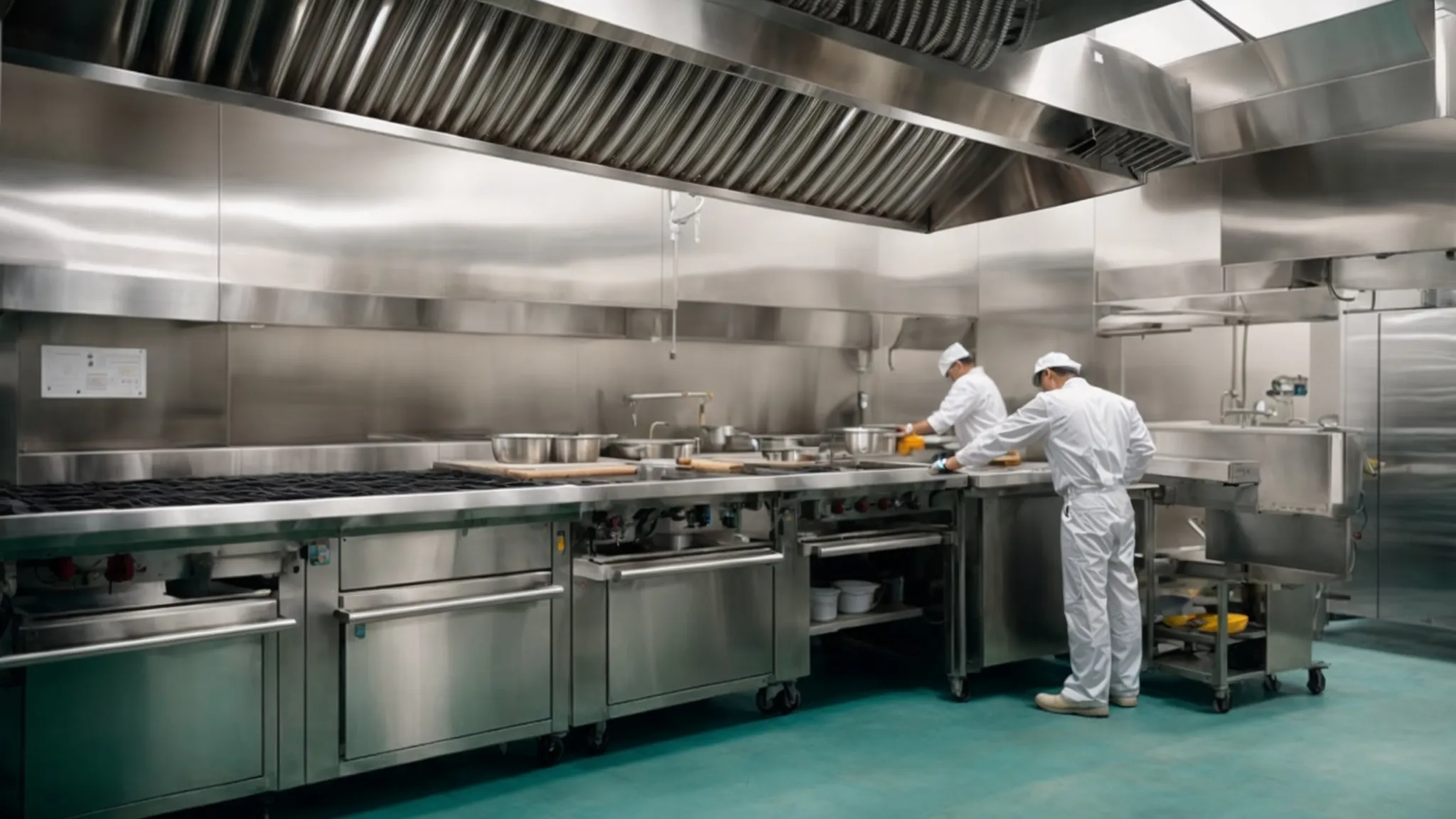
In the heart of every thriving commercial kitchen, professional hood, and exhaust system cleaning services stand as the unsung heroes, steering clear the path from grease-laden hazards to a safeguarded haven for culinary arts.
As we delve deeper into the realm of these indispensable services, two critical junctures emerge at the forefront: the anticipation of unwavering expertise from these specialized teams and the artistry in selecting a provider tailored to the unique needs of each establishment.
This journey not only unveils the meticulous process that goes behind each stroke of the clean but also navigates through the considerations vital in choosing an ally equipped to maintain the sanctity of safety and efficiency in the kitchen’s bustling environment.
What to Expect From Expert Cleaning Teams
Embarking on the journey with a professional hood and exhaust cleaning team unfolds a narrative of meticulous scrutiny paired with unparalleled expertise. These specialists arrive armed with an arsenal of tools designed to purge every nook and cranny of grease, dust, and debris, ensuring that each vent, duct, and exhaust is not just superficially cleaned but thoroughly sanitized.
Expectation sets the stage for a collaboration where transparency meets diligence; the expert teams provide comprehensive inspections, detailed reporting, and tailored advice to elevate kitchen safety and efficiency. Their work goes beyond simple cleaning by embodying a dedication to uphold the kitchen’s sanctity in the face of the constant threat of fire. They do this with the help of a profound understanding of the nuances of commercial kitchen operations across Ontario, from the busy center of Toronto to the serene landscapes of Oshawa.
Selecting the Right Service Provider for Your Needs
Choosing the ideal hood and exhaust cleaning service provider necessitates a discerning eye for expertise that goes beyond the superficial gleam of a freshly cleaned kitchen to ensure comprehensive protection against fire hazards. It demands a partner whose proficiency in navigating the labyrinth of kitchen exhaust systems is matched only by their unwavering commitment to safety and compliance with industry standards, including those set forth by the National Fire Protection Association (NFPA).
Optimal selection hinges on the ability to identify a service provider that not only promises but also delivers a fusion of meticulous cleaning practices and a thorough understanding of the dynamic landscape of commercial kitchen operations. This partnership should be anchored in transparent communication, allowing for a tailored approach that suits the unique needs and regulatory requirements of establishments across Ontario, ensuring kitchens remain both sparkling clean and safe from the risk of fire.
Prepare to embark on a journey of cleanliness that transforms. Let’s uncover the meticulous steps that ensure your kitchen shines with unmatched brilliance.
The Step-by-Step Process of Professional Hood Cleaning
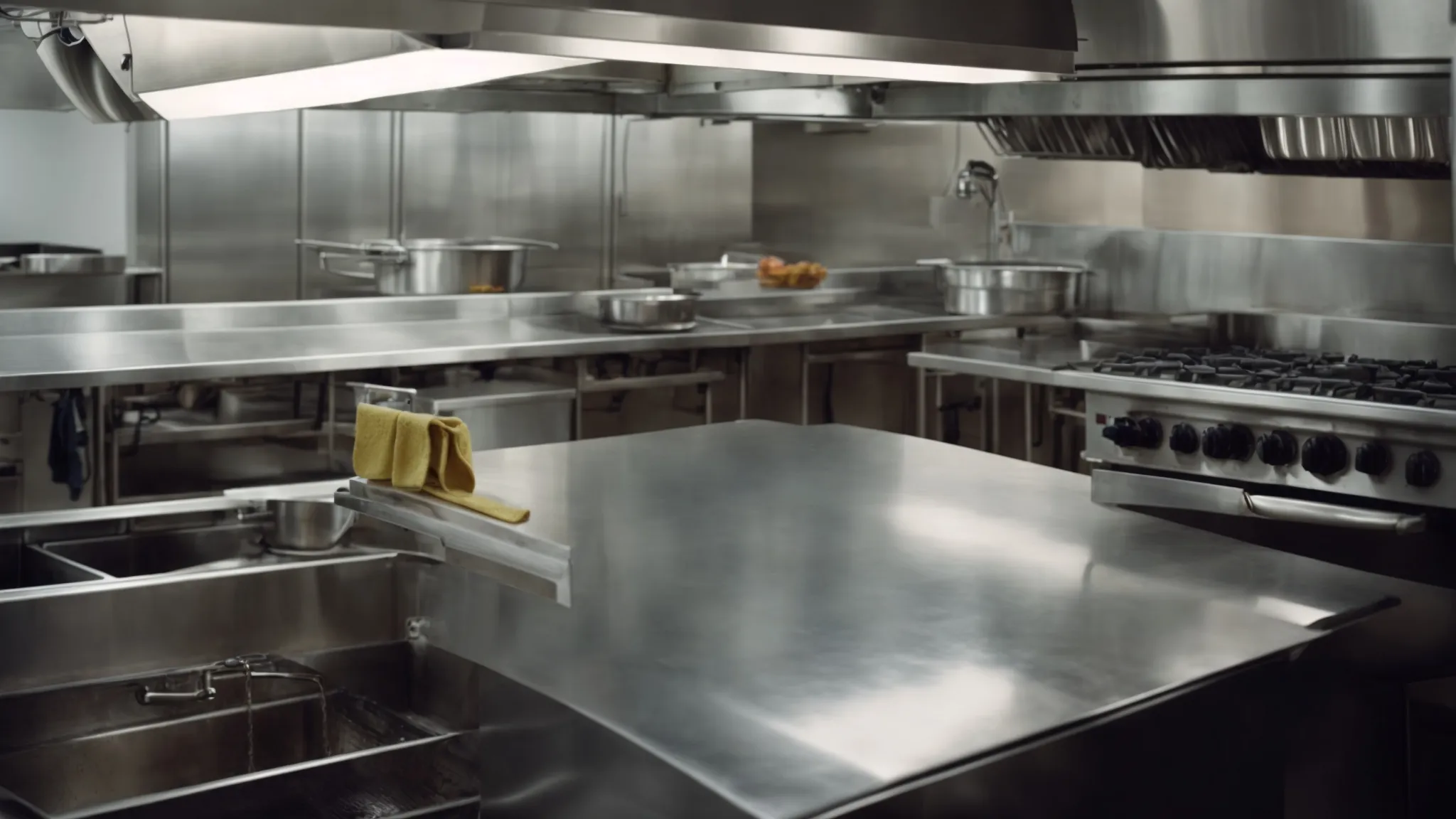
Embarking on the meticulous endeavor of hood and exhaust cleaning begins with a crucial preliminary step – the initial inspection and assessment of grease levels.
This crucial phase paints a comprehensive picture of the task at hand, setting the stage for the application of detailed scrubbing and high-pressure washing techniques designed to combat and eliminate the perilous grease buildup.
Both steps combine scientific precision with technical prowess, symbolizing a steadfast commitment to curtailing fire risks and endorsing an atmosphere of safety and efficiency within the realms of commercial kitchens.
Initial Inspection and Assessment of Grease Levels
The crux of professional hood and exhaust cleaning pivots on the initial inspection and assessment of grease levels: a crucial, preemptive strike against the lurking fire hazards within the exhaust system. This indispensable first step unfurls a map, charting the course for the meticulous cleaning journey ahead, while simultaneously unveiling the extent of grease accumulation that casts a shadow over safety and efficiency in the kitchen.
- Assessment of visible grease on surfaces and inaccessible areas.
- Evaluation of the efficacy of existing grease containment systems.
- Utilization of technology to gauge hard-to-reach places for hidden build-up.
Armed with this comprehensive overview, cleaning professionals can tailor their approach, selecting the optimal tools and techniques to navigate the landscape of the commercial kitchen exhaust system. It ensures not just a superficial cleanliness, but a strategic, deep cleanse aimed at restoring functionality and safeguarding kitchens against the fiery embrace of negligence.
Detailed Scrubbing and High-Pressure Washing Techniques
The art of detailed scrubbing within the sphere of the hood and exhaust cleaning transcends ordinary measures, epitomizing a harmonious balance between precision and strength. Through an adept application of environmentally friendly degreasers and firm-bristled brushes, cleaning professionals meticulously dismantle the stubborn layers of grease and grime, revealing a pristine surface beneath the once oil-laden facade.
Following the rigorous scrubbing phase, high-pressure washing techniques take centre stage, unleashing a torrent of cleanliness that penetrates even the most obstinate of residues. This powerful cascade, governed by expert hands, systematically purges every duct, vent, and exhaust pathway, ensuring a comprehensive cleanse of the exhaust system that leaves no corner untouched and significantly mitigates the risk of fire.
As we peel away the layers of professional hood cleaning, a world of sparkling possibilities unfolds. Let’s roll up our sleeves and explore how to keep that kitchen hood gleaming with some DIY magic.
DIY Tips for Maintaining a Cleaner Kitchen Hood Between Services
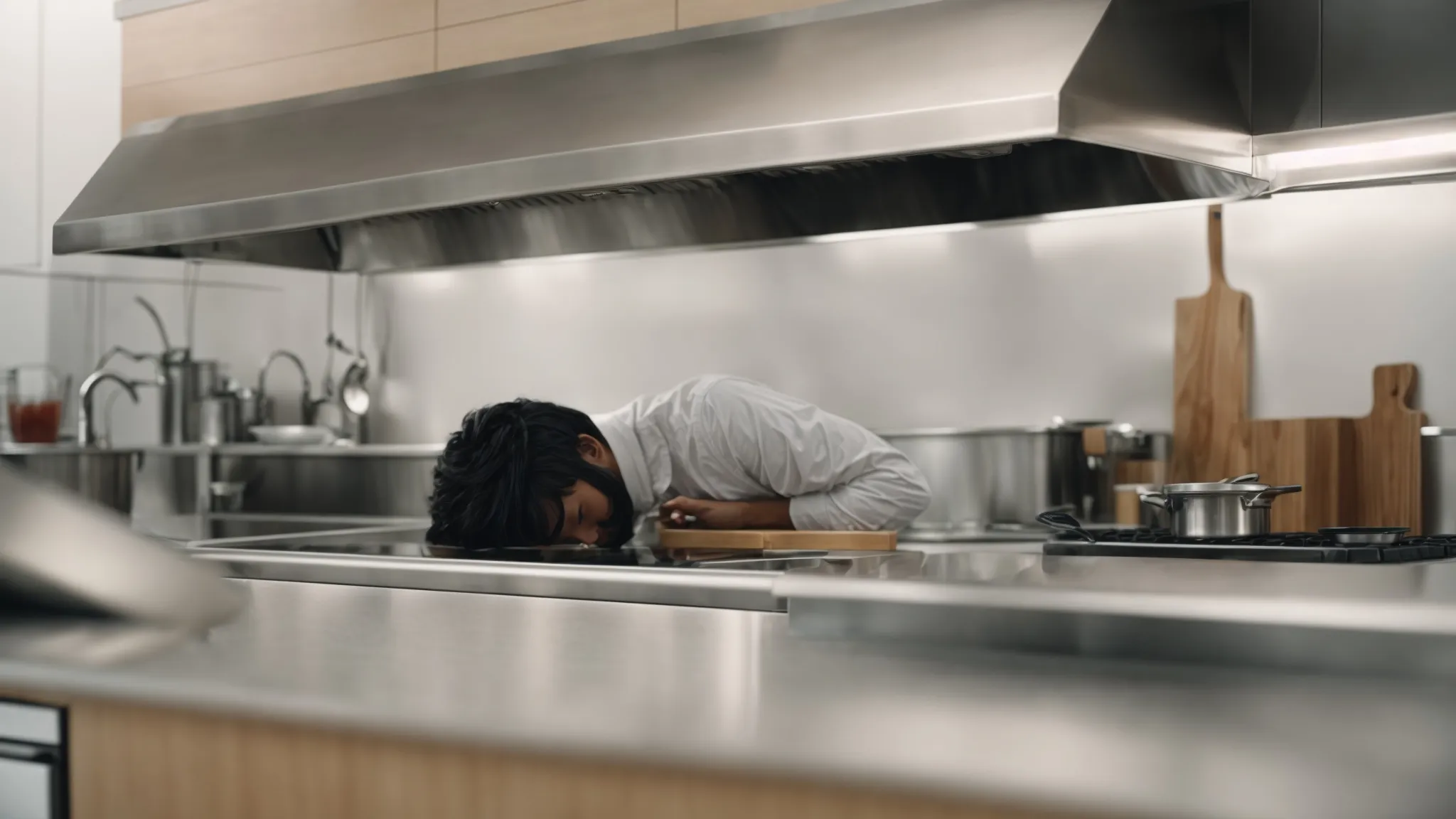
Transitioning from the thorough expertise of commercial hood and exhaust system cleaning services to self-initiated maintenance strategies amplifies the commitment to fire safety and kitchen efficiency.
Between the scheduled professional cleansing, integrating daily and monthly self-maintenance practices, it stands as a bulwark against the insidious creep of grease and the subsequent fire risks it fosters.
This section lays down the dual strategy of daily wiping down practices, designed to stave off grease accumulation, and monthly checkups, a proactive measure to identify and rectify potential issues before they escalate.
Together, these practices forge a continuous shield of vigilance and cleanliness, indispensable for any commercial kitchen’s battle against fire hazards.
Daily Wiping Down Practices to Reduce Grease Accumulation
Amid the clatter and clamour of a bustling commercial kitchen, the simple act of daily wiping down the hood and exhaust system emerges as a silent sentinel against the threat of grease accumulation. This routine, when performed diligently with a mixture of mild detergent and warm water, cuts through the day’s collection of oil and particulates, leaving surfaces not only visually appealing but significantly less vulnerable to the kindling of potential fire hazards.
Employing a microfiber cloth or non-abrasive sponge for this task ensures that the stainless steel’s integrity remains uncompromised, while the gentle yet effective cleansing action prevents the adhesion of new grease layers. This daily ritual becomes a cornerstone in the arsenal of preventative measures, bridging the gap between professional cleanings and maintaining an environment where safety and hygiene are paramount.
Monthly Checkups to Spot Potential Issues Early
Embarking on monthly checkups, restaurant owners weave a safety net that captures the early signs of potential hood and exhaust system issues. This proactive approach empowers establishments to address minor concerns before they morph into significant hazards, curtailing the risk of fire with foresight and precision.
Diligently inspecting the system’s nooks and crannies, checking for grease buildup, and assessing the effectiveness of grease containment devices form the pillars of these monthly examinations. Such methodical scrutiny nips problems in the bud, maintaining an unbreakable fortress against the threat of flames.:
| Checkup Component | Objective | Outcome |
|---|---|---|
| Grease Buildup Inspection | To identify and document areas of excessive grease accumulation. | Early intervention is needed to clean and prevent fire hazards. |
| Containment Device Efficacy | Evaluate the performance of grease traps and containment solutions. | Ensure optimal functionality and adjust or upgrade as necessary. |
| Structural Integrity Assessment | Examine the exhaust system for signs of wear, corrosion, or damage. | Timely repairs to maintain system safety and efficiency. |
Armed with DIY wisdom, your kitchen hood already gleams with promise. But, brace yourself as we venture into the intricate maze of legal requirements and codes for commercial kitchens.
Navigating Legal Requirements and Codes for Commercial Kitchens
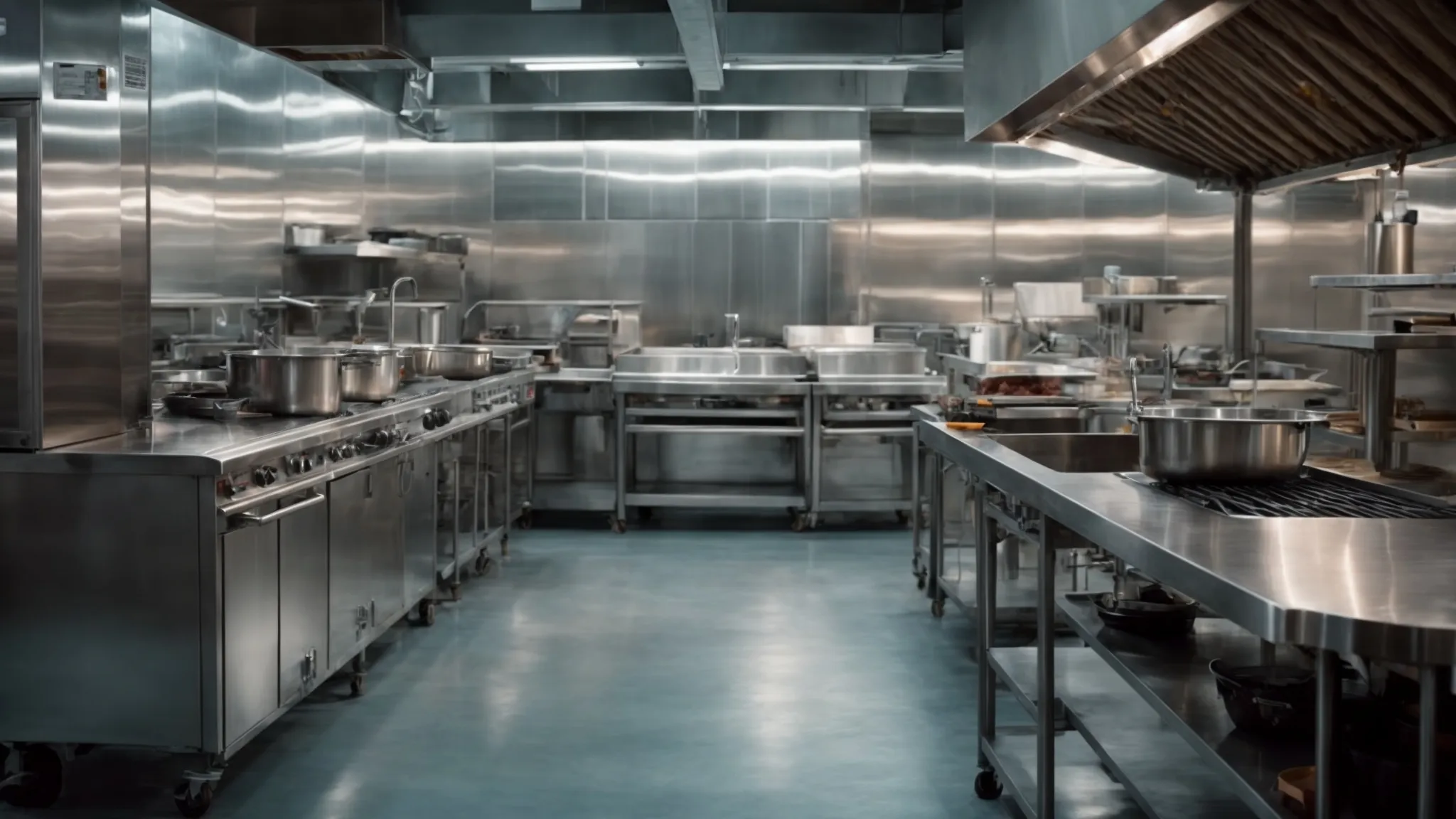
In the bustling crucible of commercial kitchens, abiding by legal requirements and codes transcends mere compliance; it embodies a fundamental safeguard against fire hazards. Navigating these legal mazes is essential for maintaining not only the safety and well-being of patrons and staff but also the very continuity of the establishment.
Each jurisdiction, from the expansive urban tapestry of Toronto to the serene landscapes of Alberta, enforces its set of regulations that dictate the standards for kitchen hood and exhaust cleaning. These codes are often aligned with guidelines set forth by authoritative bodies such as the National Fire Protection Association (NFPA), ensuring a unified front against fire risks with the exhaust system.
The adherence to these legal requirements is not a journey traversed alone; professional hood and exhaust cleaning services are pivotal allies. They bring to the table not only their expertise in cleaning but also their nuanced understanding of the legal landscape:
- Comprehensive knowledge of local and national fire safety codes.
- Meticulous adherence to cleaning standards that meet or exceed these regulations.
- Provision of documentation and certification to attest to the compliance and thoroughness of cleaning procedures.
This alliance between commercial kitchens and professional cleaning services fortifies the establishments against the threat of fire, ensuring a harmonious balance between operational efficiency and stringent safety standards. It’s a symbiotic relationship that underscores the significance of regular hood and exhaust system cleaning in the broader context of fire risk management and legal compliance.

